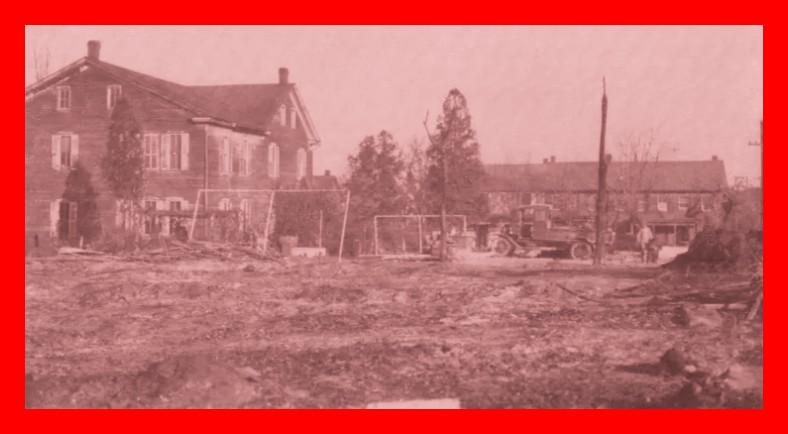Many descriptions of the Great Gratz Fire of November 4, 1924, have been published – including the accounts of newspapers of the local area and region and summaries of the fire written specially for local histories.
It is believed that the fire began behind the Union House on the southeast corner of Center Street and Market Street. When it was finally extinguished, it appeared to have taken out half of the main square of the town – at least ten buildings burned to the ground!
The account that follows here is the introduction to a series of first-hand accounts from area residents who witnessed the fire.
___________________________________________________
In the very early hours of the morning, on Tuesday, November 24, 1924, the sound of gun shots and honking automobile horns awoke the residents of Gratz to what would prove to be, a day that no one could ever forget. Thomas Kerstetter, the tenant proprietor of Union House Hotel, and his family were aroused from their sleep, and with the aid of their neighbors were able to remove clothing, furniture and other valuables before the fire destroyed their home.
The cause of the fire was never officially documented. It originated in the ice house between the hotel and barn, and was discovered by some hunters who came from Valley View. It could have been caused by arson, a lighted cigarette, or perhaps by some undetected problem. By the time the local residents had gathered on the scene, the fire was burning out of control. A brisk breeze fanned the flames and caused sparks and burning debris to be carried to nearby structures. Some of those buildings were saved by alert residents, others were devastated by the flames. At the peak of the fire, the sky was so illuminated that the reflection could be seen a distance of twenty five miles away. One person remarked that the flames looked like hell fire. Numerous folks became aware of the fire and many of them converged on the town.
Since Gratz had no fire apparatus of their own, a call went out to nearby towns for help. Elizabethville, Wiconisco, Lykens, Millersburg, and Valley View responded. Fire companies from Harrisburg were also notified and were in the process of sending help. A special train with two flat cars and two coaches, equipped with apparatus and fifty men were on their way to Millersburg when they were notified that their help would not be needed.
Destruction took its toll. Telephone wires were burned or cut off. Communication to other areas was very limited. Of thirty three telephones in town, only two were in service for some time.
Buildings were destroyed. Besides Union House – Smith’s Restaurant and Moving Picture Hall; the garage owned by Earl Hoffman and Russell Hoffman; George Adams stable on the hotel property; George Hepler‘s two barns with more than 100 tons of hay; Miller Brothers barn (adjacent to the west of the hotel property) with 450 bushels of wheat; and the barns of George Umholtz, Ira Rothermel, and Daniel Koppenhaver were all destroyed. A haystack on a farm on the eastern outskirts of the town was set on fire by a flaming piece of wood, carried by the high wind.
The Gratz residents were busy all through the night helping each other to overcome the horrors of the fire. At first they thought that the whole town would be lost. The scarcity of water was a serious problem. Private wells were being tapped, but restricted the effectiveness of the fire fighters. Fire companies from nearby communities saved the town. By four o’clock in the morning, the residents became more confident of survival.
The fire was carefully watched all day Tuesday. Water was constantly pumped to entirely eliminate the burning embers, and the truck from Elizabethville was on duty until about ten o’clock that night when it was returned home. It was the end of the a nightmare.
________________________________________________
From Memories, Volume 2, Gratz Historical Society, 1987.
Corrections and additional information should be added as comments to this post.
